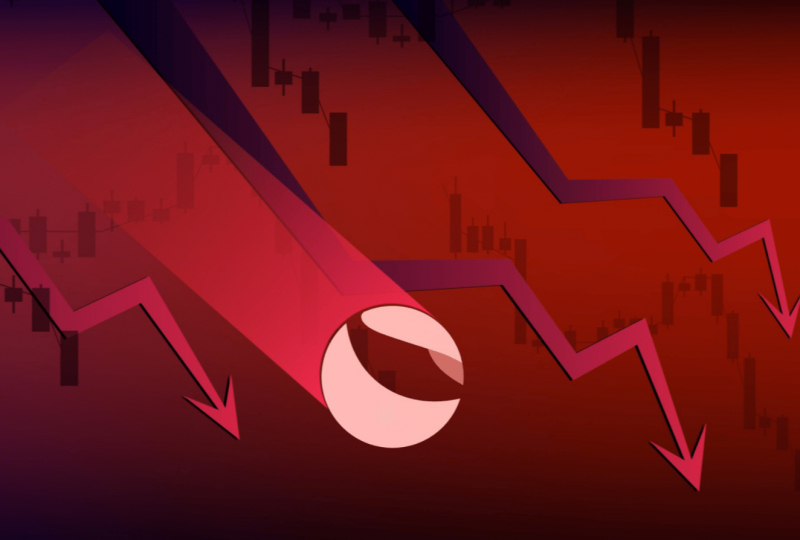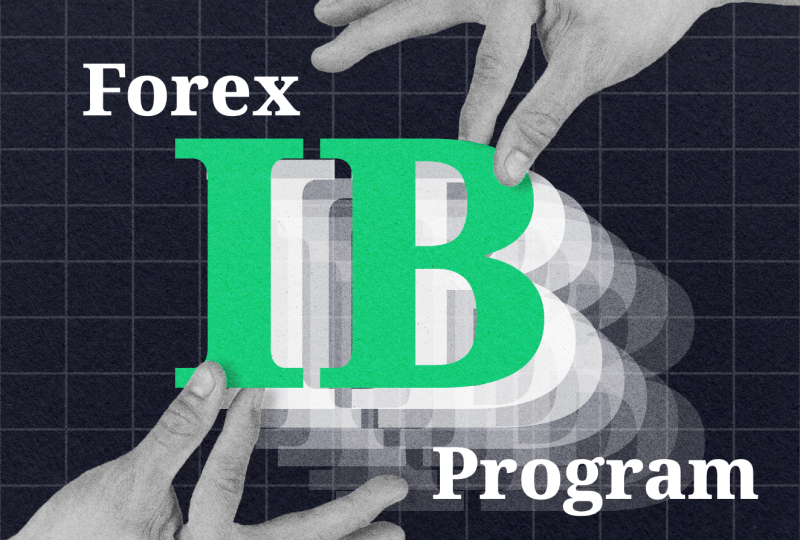Morning Brief: Collapsed Cryptocurrency Drama and What Happened in the Market Over the Past Few Days
May 15, 2022

Exclusive: The Reserve Fund of Cryptocurrencies Terra and Luna That Collapsed Previous Week Disappeared Without a Trace. What Happened So Far
Elliptic, a private organization specialized in crypto-currency investigations, stated that $3.5 billion in Bitcoins earned by the developers of the defunct cryptocurrencies Terra and Luna were withdrawn to two crypto-exchanges, after which they vanished without a trace, and their destiny remains unknown.
If crypto investors try to recuperate their losses as a result of the blockchain's failure, the destiny of the Terra reserve fund might become a major problem. Elliptic discovered that the Luna Foundation Guard (LFG) spent $3.5 billion buying Bitcoin between January and March. It will be used to purchase Terra in order to stabilize the cryptocurrency and keep it pegged to the US dollar. However, the crypto wallets in which these assets were placed were devastated the very following day.
On May 9, about $1.7 billion in Bitcoins were moved from LFG wallets to a new address in two transactions, the same day Terra co-founder Do Kwon claimed that the cash will be used to adjust the exchange rate. A few hours later, the full sum in numerous transactions was transmitted to one account on the Gemini crypto market, and it became impossible to follow the assets' destiny from that point forward, according to Elliptic.
The investigation's authors also stated that the Bitcoins left in the reserve fund the next day, May 10, were transferred to the Binance crypto exchange in a single transaction. Their fate is likewise unknown: the funds might be converted to cash or dispersed to other wallets.
Remember that the stablecoin Terra was never backed by money or securities - its rate had to be sustained by an algorithm that created "coins" of the linked cryptocurrency Luna when the rate dropped. However, on May 9, Terra quotations began to fall precipitously, and the algorithm did not help: Luna experienced hyperinflation, falling from $85 to $0.005 in a matter of days. The project's "Plan B" was a Bitcoin reserve fund, but its fate is unknown at this time.
Bitcoin and Ether Prices Drop in Weekend Slump
Saturday brought little reprieve for cryptocurrency investors, as digital assets resumed their slump following a midweek break.
Bitcoin fell 5.9 percent in 24 hours through noon Eastern time on Saturday, to $28,782, in trading on Coinbase Global's platform (COIN). The cryptocurrency is down 20% this week, while the token is down 58 percent since its top above $69,000 in November 2021.
The news isn't much better for Ethereum holders: The cryptocurrency has dropped 8.7 percent in the previous 24 hours on Coinbase, falling to $1,966. Since November, Ethereum has dropped by 59%.
The digital falls have had a significant impact on the equities of crypto-dependent companies such as Coinbase. While the company's stock rose 16 percent on Friday to settle at $67.87, it is still down 72 percent this year and 81 percent from its November highs.
Apple Is No Longer the World’s Most Valuable Company. Saudi Aramco Is No. 1
During the recent instability in financial markets, oil has emerged as more powerful than technology.
Saudi Aramco, the state-owned oil corporation, has dethroned Apple (AAPL), the creator of iPhones and Mac computers, as the world's most valuable business.
The oil giant reached a near-record high of $2.4 trillion in market value on Wednesday, surpassing Apple, which plummeted more than 5% to just below that level.
Apple (AAPL) shares have fallen nearly 20% this year, while Aramco has risen 28%. Saudi Aramco (2222.SA) last eclipsed Apple's worth in 2020.
The corporation that controls the extraction of petroleum from Saudi Arabia, which has the world's second-largest reserves, has benefitted from the rise in oil prices since Russia invaded Ukraine in February. This boosted shares of Exxon Mobil XOM +2.97 percent (XOM), Chevron CVX +1.92 percent (CVX), and Occidental Petroleum (OXY).
Steel Prices Are Rising, Too. These Stocks of Steel Companies Are a “Buy”
The conflict in Ukraine has had the greatest impact on the forecast for European steel businesses, both raising material prices and increasing production costs.
Steel, which is used to make automobiles and structures, is strongly related to the economy. Steel prices, which rose by up to 50% when Russia invaded Ukraine, are expected to fall somewhat in the following months. Inflation, rising interest rates, and global unrest raise the prospect of a recession.
Meanwhile, analysts have set share-price goals for three companies: ArcelorMittal (MT.Netherlands), ThyssenKrupp (TKA.Germany), and Salzgitter (SZG.Germany) .
ThyssenKrupp and Salzgitter may trace their roots back to Germany's meteoric rise as an industrial powerhouse in the nineteenth century. Arcelor was formed by the merger of Luxembourg, Spain, and France's business goals; it merged with India's Mittal in 2006 to become the world's largest steel corporation.
ArcelorMittal, headquartered in Luxembourg, is also a mining company with activities in North America, Brazil, and Africa. This year, the stock has fallen 7.4 percent to 26.05 euros ($27.02). However, the average price objective set by 14 experts is €43.41. Higher steel prices boosted the company's first-quarter profitability and sales. Read More
Euro Is Sliding Toward Dollar Parity for First Time in 20 Years
For the first time in two decades, the euro is approaching parity with the US dollar. Europe's single currency has already fallen to a five-year low at $1.03, collapsing from a rush into the greenback as a safe haven from market turbulence and the Ukraine crisis. As a result, HSBC Holdings Plc and RBC Capital Markets estimate the two will reach parity in 2022.
Hedge funds have already placed bets on it. They've poured $7 billion in notional value into parity options wagers in the last month alone, making it the most popular trade among those expecting the common currency to fall further. "At the moment, the euro is not an appealing currency," said Francesco Pesole, a currency strategist at ING Groep NV. While the Dutch bank's official euro projection for the next six months remains at $1.05, Pesole concedes that the dollar's strength and market volatility indicate that parity is possible.
The euro's crisis is mostly due to dollar strength, which has been exacerbated as the Federal Reserve continues to raise interest rates faster than its counterparts. A new round of global risk aversion, which has knocked the wind out of equities and credit markets, is simply adding fuel to the run towards haven currencies.
The European economy's prognosis is likewise deteriorating. An ongoing stalemate with Moscow over natural gas supplies to the continent has heightened the likelihood of a significant slowdown. The International Monetary Fund has reduced the currency bloc's growth prediction for 2022 to 2.8 percent.
As a result, the European Central Bank is walking a tightrope. It must weigh the necessity for stricter policy to contain record inflation against the risk of economic harm, particularly in some of the region's most indebted member nations, such as Italy. While officials may raise rates above zero before the end of the year, there are concerns about further increases, and any renewed selloff in the euro that breaks through the January 2017 low of $1.0341 – which was almost touched on both Thursday and Friday – could set the currency up for further losses. Read More
China’s Newest Commodity Exchange Eyes Silicon as First Contract
After significant fluctuations in the metal's price in 2021, China's newest commodities market expects to launch its maiden contract later this year, centered on industrial silicon.
The Guangzhou Futures Exchange expects to sell silicon futures in the second part of the year. According to the person, who requested not to be identified because the information isn't public, it's also aiming to build an index that covers a wide range of commodities and is awaiting final regulatory permits for the launch.
The exchange commenced operations in April 2021 as China's sixth commodity and derivatives exchange. According to its website, it is looking for niches in items that aren't yet traded on other domestic platforms and has gotten clearance for 16 products, including polysilicon, rare earths, and lithium.
Silicon is found in everything from solar panels to computer processors to automobile components. Prices soared more than 300 percent to record highs in October, when output was hampered by power outages in Yunnan and Sichuan, the primary manufacturing centers.
Hoshine Silicon Industry Co., a leading manufacturer of the metal, stated in its annual report in April that the contracts are expected to be given in August and that they might help China gain greater price-setting influence in the worldwide market. Hoshine did not reply to inquiries concerning the contracts.
Last year, the US government sanctioned Hoshine and prohibited importation of its products, accusing it of utilizing forced labor in its Xinjiang plants. Hoshine did not reply to calls for comment at the time, and the Chinese government has consistently refuted reports of forced labor and other human rights violations in the region, dubbing them "the lie of the century."
According to Hoshine, China accounts for almost 80% of worldwide industrial silicon production, and output might climb 7% to 2.8 million tons this year. According to the report, demand in China is around 2.3 million tons, compared to approximately 700,000 tons in the rest of the planet.




